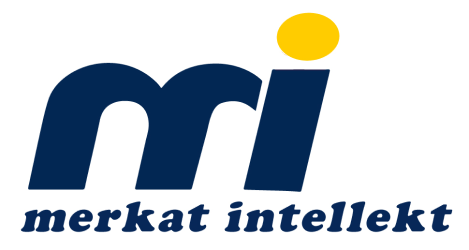If you want to build a successful software product, you need to start with an MVP. Minimum Viable Product is a version of your digital product that has the minimum features needed to solve the pain points of your earlyvangelists to prove that there is demand for your product.
The goal of an MVP is to find out if there is enough interest in your product to warrant building a full-fledged version of it.
You can use different methods for your customer acquisition process. Define your target audience well and reach out to your earlyvangelists. You could talk directly to your earlyvangelists or try reaching them via., market research and surveys. Or you might even try using social media platforms like LinkedIn, Facebook and Twitter to get feedback from earlyvangelists, who are interested in what you have built so far and are ready to buy the product.
In this article, we’ll briefly understand what a minimum viable product is and a few ways to find your earlyvangelists/first few customers early on.
Start with a Lean, Minimum Viable Product
The best thing about starting with an MVP is that you don’t have to spend money or time developing something that doesn’t work yet. You only pay attention to what is essential to entice your earlyvangelists and ignore everything else. This makes it easier to test things without spending too much time on non-essential features.
It’s important to know whether you’re building a pain-killer solution or a vitamin-like solution. Both have different MVP requirements and approaches. According to Kirti Varun Avasarala, Chief Product Officer at Meesho, “A pain-killer problem requires a quick and lightweight MVP to solve while vitamin products need a vast improvement over existing solutions”.
To put it differently, a painkiller product solves an unmet user need(s) while a vitamin product improves an existing solution. Examples of painkiller products would be Dropbox, Uber, and Airbnb. Vitamin products include: Slack, Trello, and Stripe.
Considering the nature of your user problems, market dynamics and long-term vision will help you decide whether you’re building a painkiller or a vitamin.
Ideas to Get Your Initial Paying Customers
Build a Landing Page and Send Traffic to It
One of the most effective ways to let your earlyvangelists know about the solution you have built for them is to let their traffic to your website, by creating a landing page. Create the landing page in a way such that it clearly brings out the problem you are addressing for the earlyvangelists and how your MVP can address their pain point.
To make sure that visitors actually land on your landing page, send traffic from sources like Google Adwords, Facebook Ads, Twitter ads, or LinkedIn – a channel where your target customer hangs out. Once they arrive at your site, give them a clear call to action. For example, “Sign Up Now!” or “Download now!”
When someone clicks on one of these CTAs, he/she gets redirected to another URL that contains more information about your product. That means you’ve successfully converted a lead into a potential buyer.
This method is great because it allows you to quickly build a list of users who want to try out your product. As long as you keep sending traffic to your landing pages, you won’t lose any leads even after you stop promoting your product.
Create a Free Trial Version of Your App
Offering free trials is a good idea. The reason why we suggest giving away a trial version is so that you can gather customer feedback.
Free trials allow you to see how well the actual product performs under normal conditions. They also let you gauge interest among prospective customers. After all, people are willing to download apps when there aren’t many alternatives available in their area.
You should consider making this option optional though. In other words, offer a free trial but require signup before downloading. When people use your free trial, they become part of your email list as a subscriber and can be used for marketing purposes in the future.
Offer Discounted Pricing
Another way to attract early adopters is to provide discounts. This strategy works best with software products since they tend to cost less than physical goods. Timebound lifetime deals are also a great option. Here, you offer your product for a one-time cost for the first few hundred or thousand customers – rather than the regular monthly or annual pricing.
You offer this discounted pricing in exchange for market feedback, which makes for excellent product strategy.
Provided your product offers excellent value, platforms like Appsumo can help you accelerate user growth efforts by getting thousands of engaged and happy users in just a couple of weeks.
AppSumo launched Zapier with access to their then 157 services for a one-time fee of $39. Now with over 2,000 integrations locked and loaded into their arsenal, and over 3 million users Zapier has become the leader in the app integration market.
Consider another market leader, Intercom, which was also launched on Appsumo in 2012. The lifetime deal had a humble pricing of $49.
You don’t have to spend hours manually searching through social media profiles to find interested prospects. Instead, you can rely on automated platforms like Appsumo or GrabLTD to do the work for you.
Get Reviews from Influencers
Influencer reviews work really well for software products. These days, influencers are everywhere online. And thanks to social media sites such as Instagram, YouTube, and Pinterest, they’re easy to reach too.
All you need to do is ask your favorite bloggers or vloggers to review your product. Just be careful that you don’t overdo it. If you bombard them with requests, they might get annoyed and ignore you forever. Instead, focus on contacting influential individuals who have already expressed an interest in what you’re selling.
Once you’ve built relationships with these influencers, you can pitch them ideas related to your business. You may end up getting featured by them in exchange for providing exclusive access to your product.
If you get permission to mention their brand on your landing page, that’s another win–win situation.
Build Communities for Your Product
Social media has changed everything. Today’s consumers expect brands to be active across multiple channels including social networks. To stay relevant, businesses must engage with their audience through various platforms.
Right now, social media groups such as LinkedIn & Facebook Groups are the most popular place where companies interact with potential buyers. You could use your social media group to launch features, get feedback from your customer base, and gather ideas for in-demand features.
But if you want to build long term loyalty, you’ll eventually need to move beyond these social media groups. That means building your own communities outside of the likes of Facebook.
For example, you could create a Slack channel for your product. Or maybe you’d prefer to host in-person events at local coffee shops. Whatever method you choose, make sure that you keep things interesting. People will only stick around if they feel connected to your community and their feedback is valued.
Create a Lead Magnet
A lead magnet is any piece of content that provides value to potential buyers by showcasing your expertise and thought leadership. For software products this could be anything from lead-generating white papers to webinars. The goal here is to provide highly valuable information – even if it’s free – that helps prospects understand why they should buy your product instead of competitors’ products.
Start Content Marketing Early On
Content marketing is an essential part of any business strategy. It helps you build trust with your audience and establish yourself as an authority in your niche. Then, when it comes time to sell them on a software solution or service, they’ll be more likely to buy from you because they already know who you are and what you stand for. Therefore, if you want to get started building up that list of potential customers right away, here are some tips:
Start by creating great content. This means writing blog posts, articles, videos, etc., all related to your industry. The key thing to remember is that people don’t care how much you know until they know how much you care. So make sure you’re sharing useful information that will help others solve their problems.
Create social media profiles like Facebook, Twitter, LinkedIn, Instagram, Quora, YouTube, etc. and share your content. Make sure these accounts have clear calls to action. For example, if you offer a process design app, then include links to download the app on each profile page.
Conclusion
We’ve discussed a handful of highly effective practices to win your first customers for your tech solution. Picking one or two tactics and implementing them is the fastest way to start generating leads today. But there’s no reason not to try out several different methods. If you find something works really well, continue using it! And if you can’t seem to generate enough leads with a particular tactic, consider trying another tactic.

